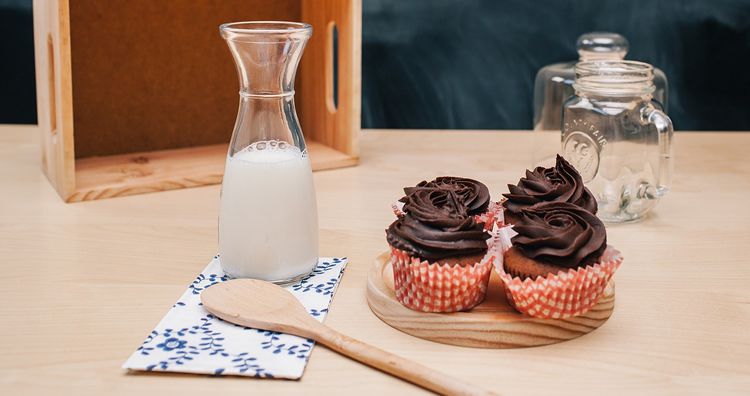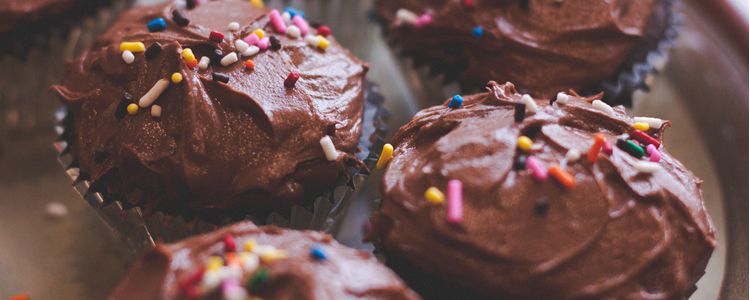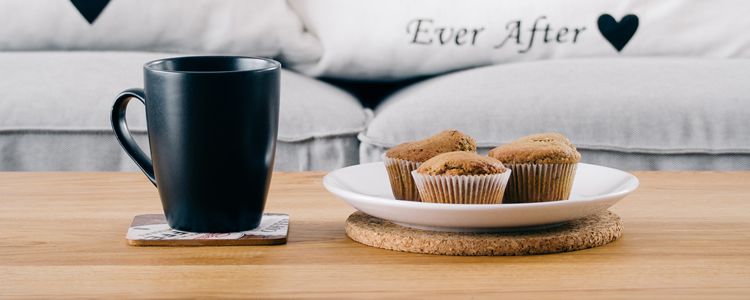Ah, cupcakes. Who doesn’t love those little, round bites of deliciousness? With a history spanning many, many years, cupcakes have a rich legacy that includes chemistry, enterprise, and problem solving.
Today we’ll explore five ways the design process is remarkably similar to the process pastry chefs use to bake cupcakes, and what designers can do to improve their own design workflow. Also, you’ll probably get a little hungry in the process – just giving you fair warning!
1. Use Only The Tools You Need
Cupcakes themselves have a rather extensive design history. In the middle ages, miniature cakes stamped with tiny images were used to spread knowledge of the Bible to the common people, who were mostly illiterate. The priests spreading the gospel in those days had mastered a simple but powerful tool that many in sales and marketing still use today – giving people free food!
The next time you see free samples of a new product at the grocery store, or complimentary snacks branded with a particular company’s logo, you’ll know that these companies are using the same tactic that worked hundreds of years ago.

It’s important to think about your design process in terms of communication and problem solving – from the tools you use all the way up to the most abstract ideas. Remember, the medieval priests didn’t need anything complicated to get their message across – all they had was cake!
The only equipment you need for baking a batch of delicious cupcakes is a pan, cupcake wrappers, a bowl to mix in, and an oven to bake. If something isn’t necessary to get your message across, it probably shouldn’t be there. Try removing some of your not-so-essential tools from your arsenal and see if you can still make things work.
2. Measure Twice, Bake Once
Baking cupcakes from scratch is one of those things that you either get right, or you botch completely. Instant cake mixes and the like have made the process much easier for most people, but if you want to try your hand at old-fashioned cupcakes the way grandma used to make, you’ll need a good handle on the exact science of baking.

In this way, making cupcakes is a lot like design. Sure, you can download some clipart or use a template in Illustrator to quickly create a design, but most clients are paying you for the problem-solving abilities in your own brain.
In order to do that successfully, designers have to temper their wild creative impulses with a healthy dose of ‘science’ – testing the strength of your ideas through research, feedback from your clients and the audience you’re trying to reach, and lots and lots of sketches.
Measure carefully. Be ultra specific about your “recipe” and you’ll always have a strong design.
3. Test Everything Before You Use It
In some of the more meticulous bakeries I’ve worked with, the chefs have a ritual after their day’s work is done. They clean all the equipment they’ve used, electrical and non-electrical, then test it to see if it works. Even if they just used it and it was working perfectly. The reason they do this is because they want to be 100% certain that nothing will fail on them right in the middle of an important process.
If something is low on power, or cracked, or has an imperfection that will hinder their work, they fix it before the next day. This also applies to ingredients – if a baker is running low on sugar or flour, it’s better to know that in advance, rather than right before they start work the next morning.

Making sure you know what all of your tools are capable of allows you to quickly tweak your process for maximum efficiency. Establish a ritual of testing everything constantly, so that everything you need is always ready to go before you begin ‘cooking.’ Don’t just assume that something is in working order simply because you’ve used it recently. And even if it is, don’t assume that it will remain in working order for the duration of your project.
You can apply this literally to the tools you use – your hardware, save files, code, etc. But I’m also referring to your design ideas and how much are or should be conforming to the design brief. Sometimes clients think they know what they’re looking for, but if through testing you spot an area where you can improve on their idea, never hesitate to let them know.
4. Let It Cool
Anyone who has ever tried to put frosting on piping hot cupcakes knows that, well, it just never works. The cupcakes are too hot, and the frosting has a pesky habit of melting all over the place, creating a sticky mess rather than a fluffy swirl. It’s agonizing, I know, but cupcakes must be allowed to cool after removing from the oven. And so should your designs.

Don’t just rush off a new design straight from your computer to the client’s inbox. Let it “cool” first, coming back to look over it again once your brain has had a chance to digest things a bit. Sometimes, what looked “right” one day can often transform right before your eyes the next, and be the completely wrong solution for your client’s problem. Giving things time to “rest” after you take them out of the oven is a time-honored baking tradition, and you should do no less with your designs.
Of course, you may not have a whole day to put your work away and not look at it – deadlines can loom and you need to get something to the client on time. But even just a 15 to 30 minute break can work wonders and be enough to give you a fresh perspective.
5. Function Is Delicious
In a cupcake, everything has a function. Really! Think about it – when was the last time you saw a baker simply adding in extra ingredients in a batch of cupcakes that had no business being there? A boring old vanilla or chocolate cupcake can be made interesting and gourmet if you add one or two exotic ingredients – maybe some juicy chunks of mango, or a dash of ginger. But put in too many of those things and you’ll just end up with an inedible failure on a plate.

In your designs, if something has no function, get rid of it. Every designer worth his or her salt should know this, and to be fair, most do. But we all forget sometimes – I know I do! A simple reminder is sometimes all you need to pare down your work to its barest essentials. In my case, I simply think of cupcakes. When I’m looking at a design that looks too cluttered, I ask myself: ‘if this were a cupcake, would it taste good?’
Yes, you read that right. I really ask myself that. And it works. If a design is working and everything is simplified as much as it can be while still offering something new and unique, I consider that a successful and delicious cupcake that I would enjoy eating. But if something is off, I might just have a sweet nightmare on my hands!
Translating your designs to a different medium, even if its just hypothetical, is a simple but effective way to ensure they work from any perspective.
Related Topics
Top